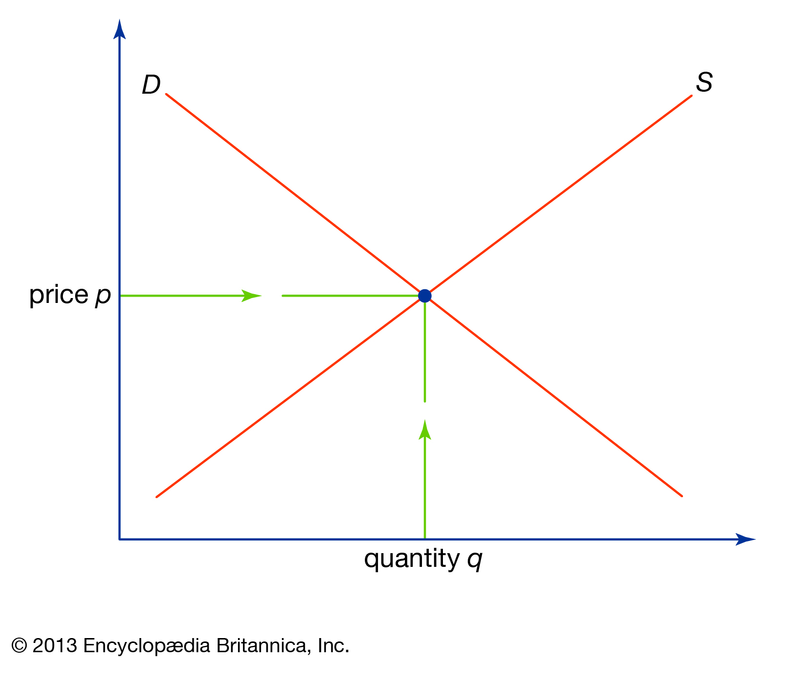 Photo by Beata Ratuszniak on Unsplash
Photo by Beata Ratuszniak on UnsplashImagine you're at an art auction.
A painting goes on sale. You bid on it. Someone else bids higher. You outbid them. Eventually, the winner pays out more than the initial price.
Another painting goes on sale. Nobody wants it. So the auctioneer reduces the price. Still, no takers. Eventually someone bids on it paying less than the initial price.
What happened here?
The first painting had a lot of demand, so the seller could get a higher price.
The second painting had almost no demand, so the seller had to reduce the price.
Defining Supply And Demand
In economics, supply and demand are two important factors in determining the price of an item.
Supply refers to how much of the desired object exists.
Demand refers to how many people want the object.
Many factors impact supply and demand, such as:
If consumers have many options for products, the demand for a specific product goes down.
If a product is trendy, the demand will increase.
If it takes a long time to create the product, the supply will be smaller than if it can be made quickly.
If the cost of production or transport decreases, the supply will increase.
Quiz
A certain shoe company has name brand appeal. People want to buy their shoes no matter how many similar options exist. This feature will means that ________ will stay the same even if the price changes.
The Laws Of Supply And Demand
The Law of Supply
The higher the selling cost of a good, the more supply there is.
This makes sense: the more expensive an item is, the more a supplier wants to create that product, and so, the amount of that product increases.
The Law of Demand
If all other factors are equal, the higher something costs, the fewer people will buy it.
This makes sense: the more expensive something is, the more consumers will wonder whether it is worth it or not. In the end, fewer people will end up buying it.
Quiz
Paintings of clouds sell for $100, while portraits sell for $50. Both have similar costs to produce. Which painting type are painters more likely to produce?
Prices Reflect Supply And Demand
Imagine you are a seller of an item.
Price your item too low, and everyone will want to buy it. You'll run out of stock quickly. The demand will be greater than the supply.
Price your item too high, and nobody will want to buy it. You'll wind up with too much stock. The supply will be greater than the demand.
So, the seller needs to find the point of balance between the two factors. A perfect balance will have the price be such that the forces of demand equal the forces of supply.
This graph explains the dynamic:
 The D-line plots Demand. It is drawn from the perspective of the buyer. When the price is high, the quantity demanded is low. When the price is low, the quantity demanded is high.
The D-line plots Demand. It is drawn from the perspective of the buyer. When the price is high, the quantity demanded is low. When the price is low, the quantity demanded is high.
The S-line plots Supply. It is drawn from the perspective of the seller. The lower the price, the less incentive there is to produce the item. When the price is high, the more the seller wants to make that item.
The blue dotis the point of equilibrium. Where the quantity and price meet, and everyone who wants to buy the item does, and the seller creates enough to meet that demand at the right price.
Factors that impact supply and demand change over time.
As a result, the blue dot of equilibrium will also change in response to those factors. Producers need to be aware of supply and demand and respond accordingly.
Factors Impacting Supply And Demand
Factors Affecting Supply:
Factory capacity
Production costs
Number of competitors
Factors Affecting Demand:
Customer preferences
Other purchasing options
Trends
Video Explanation
Still confused? Don't worry - economic theory isn't easy.
Here's a short video that explains these ideas:
Take Action
Remember:
Supply refers to the amount of a product available. The higher the price, the more producers want to create the product, increasing the total supply.
Demand refers to how much consumers want the product. The higher the price, the lower the demand, as consumers question the value of the product.
Producers need to strike a balance between supply and demand to sell their products at the right price.
There's a lot more that goes into supply, demand, and other market forces. So if this interests you, dive into more advanced discussions to learn more!
Your feedback matters to us.
This Byte helped me better understand the topic.
